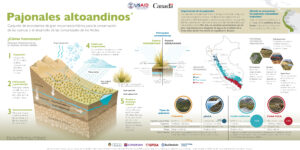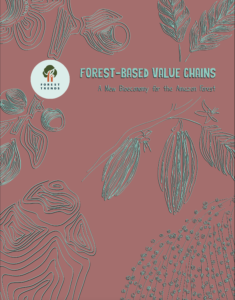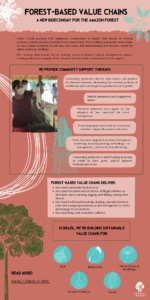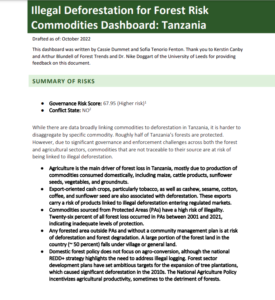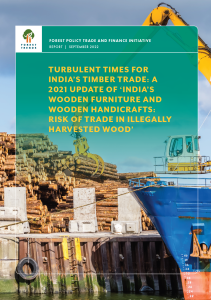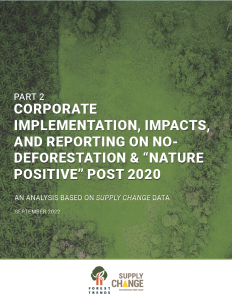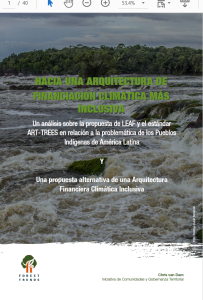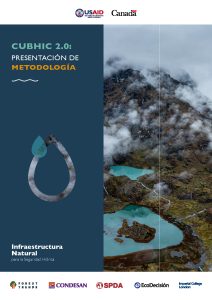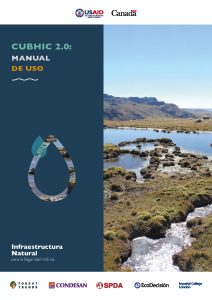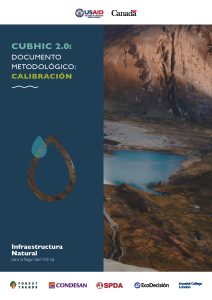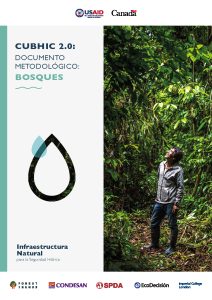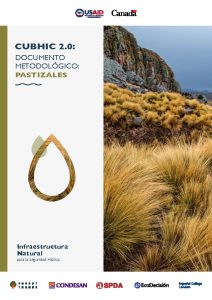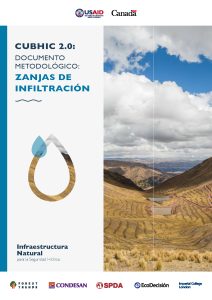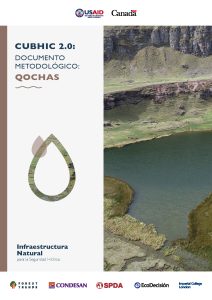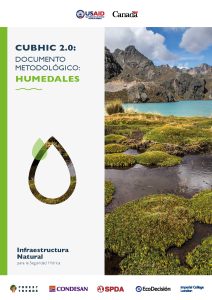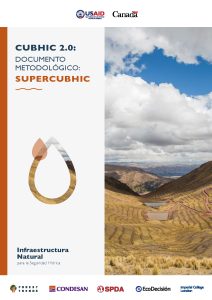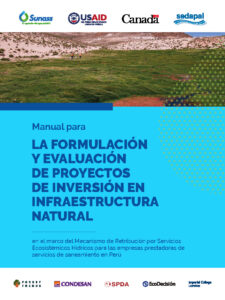Infografía: Pajonales altoandinos
Conjunto de ecosistemas de gran importancia hídrica para la conservación de las cuencas y el desarrollo de las comunidades de los Andes
Forest-based Value Chains: A New Bioeconomy for the Amazon Forest
As deforestation rates soar in the Amazon, national and regional governments are under pressure from the international community to control forest loss. The problem is that the current economic growth model relies on forest conversion for agriculture and livestock production, putting immense pressure on the forest and the indigenous communities living in it. But alternative […]
Infographic: Forest-based Value Chains: A New Bioeconomy for the Amazon Forest
By Verena Manolis, Cheyenne Coxon, and Genevieve BennettForest Trends partners with indigenous communities in Brazil’s Tupi Mosaic to develop economic enterprises that promote forest conservation. We’re building sustainable value chains for açaí, artisan products, Brazil nuts, and cacao, and demonstrating the business model for native seeds and seedlings. The “Amazon Bioeconomy” we are building mimics traditional Amazon management systems, creating a diversity […]
Email Signup
Subscribe to any of Forest Trends’ mailing lists to keep up with the news, publications, and events that interest you.
Having Trouble?
If you experience any technical difficulties on our site, please contact Genevieve Bennett, Communications Manager.
Forest Trends Impact Report 2022
Resilience in Action
Forest Trends was founded with the mission of putting an economic engine behind nature conservation – the idea being that our economy, our society, and our wellbeing all depend in very real and material ways on healthy natural ecosystems. That idea’s time has come. The world is looking to “nature-based solutions” to combat climate shifts, mitigate […]
Illegal Deforestation for Forest-risk Commodities Dashboard: Tanzania
By Cassie Dummett and Sofia Tenorio FentonAgriculture is the main driver of forest loss in Tanzania, mostly due to production of commodities consumed domestically, including maize, cattle products, sunflower seeds, vegetables, and groundnuts. Export-oriented cash crops, particularly tobacco, as well as cashew, sesame, cotton, coffee, and sunflower seed are also associated with deforestation. These exports carry a risk of products linked […]
Turbulent Times For India’s Timber Trade
A 2021 Update of "India's Wooden Furniture and Wooden Handicrafts: Risk of Trade in Illegally Harvested Wood"
By Michael Richards, Sofia Tenorio Fenton, Naomi Basik Treanor, and Kerstin CanbyThis report focuses on recent changes in India’s international timber trade, especially over the 2019–2021 period, and the implications (of identified changes) for India’s sourcing of illegally harvested or traded timber. The paper thus provides an update of Forest Trends’ 2020 report India’s wooden furniture and wooden handicrafts: risk of trade in Illegally harvested wood […]
Corporate Implementation, Impacts, and Reporting on No-Deforestation & “Nature Positive” Post 2020
Companies are setting stronger, more wide-reaching commitments to address commodity-driven deforestation, but greater transparency and more consistent reporting are needed across all stages of the value chain to achieve these commitments, and deliver meaningful positive impacts on forests and other natural ecosystems. In the second part of this two-part series on the findings of Supply […]
Hacia una arquitectura de financiación climática más inclusiva
Un análisis sobre la propuesta de LEAF y el estándar ART-TREES en relación a la problemática de los Pueblos Indígenas de América Latina
By Chris Van DamEl principal objetivo de este documento es poder brindar elementos de reflexión y discusión para que las organizaciones indígenas de la Amazonía y Mesoamérica puedan tener mayores elementos para saber de qué se trata, cuales son los pros y los contras de esta iniciativa, y para que, a partir de allí, puedan trazar mejor un […]
Metodología de cuantificación de beneficios hidrológicos de intervenciones en cuencas – CUBHIC 2.0
By Boris Ochoa-Tocachi, José Cuadros-Adriazola, Vivien Bonnesoeur, Francisco Román-Dañobeytia, Gena GammieLa cuantificación de beneficios hidrológicos es clave para el diseño y evaluación de proyectos de infraestructura natural para la seguridad hídrica. La metodología CUBHIC (Cuantificación de Beneficios Hidrológicos de Intervenciones en Cuencas) es una innovación del proyecto Infraestructura Natural para la Seguridad Hídrica, que ofrece una metodología práctica para producir estimaciones cuantitativas de los beneficios[…]
Dependent Documents
Manual de Uso – CUBHIC 2.0
By Boris F. Ochoa-Tocachi, José Cuadros-Adriazola, Vivien BonnesoeurDocumento Metológico: Calibración – CUBHIC 2.0
By José Cuadros-Adriazola, Boris F. Ochoa-Tocachi, Vivien BonnesoeurDocumento Metodológico: Bosques – CUBHIC 2.0
By Boris F. Ochoa-Tocachi, José Cuadros-Adriazola, Vivien BonnesoeurDocumento Metodológico: Pastizales – CUBHIC 2.0
By Boris F. Ochoa-Tocachi, José Cuadros-Adriazola, Vivien BonnesoeurDocumento Metodológico: Zanjas – CUBHIC 2.0
By Boris F. Ochoa-Tocachi, José Cuadros-Adriazola, Vivien BonnesoeurDocumento Metodológico: Amunas – CUBHIC 2.0
By Boris F. Ochoa-Tocachi, José Cuadros-Adriazola, Vivien BonnesoeurDocumento Metodológico: Qochas – CUBHIC 2.0
By Boris F. Ochoa-Tocachi, José Cuadros-Adriazola, Vivien BonnesoeurDocumento Metodológico: Humedales – CUBHIC 2.0
By Boris F. Ochoa-Tocachi, José Cuadros-Adriazola, Vivien BonnesoeurDocumento Metodológico: SUPERCUBHIC – CUBHIC 2.0
By Boris F. Ochoa-Tocachi, José Cuadros-Adriazola, Vivien BonnesoeurManual para la Formulación y Evaluación de Proyectos de Inversión en Infraestructura Natural
En el marco del Mecanismo de Retribución por Servicios Ecosistémicos Hídricos para las empresas prestadoras de servicios de saneamiento en Perú
By Gilmer Medina, Janeth Gamarra, Luisa CifuentesTras más de seis años de trabajo en la formulación y ejecución de proyectos de infraestructura natural en el marco de implementación de los MRSEH, el Equipo de Gestión Ambiental y Servicios Ecosistémicos (EGASE) de SEDAPAL, con el acompañamiento y la asistencia técnica de Forest Trends a traves del Proyecto de Infraestructura Natural para la[…]

